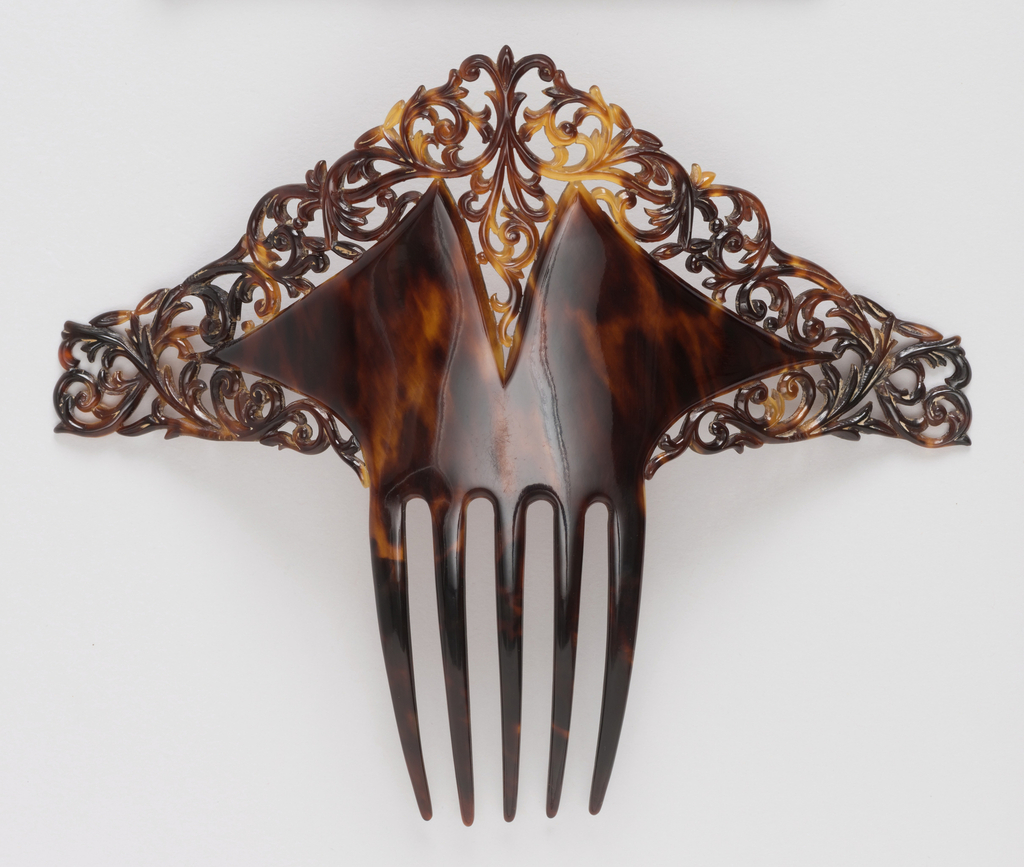A version of this post was originally published on September 22, 2015.
Some combs are used to groom hair, others to embellish and hold it in place. This decorative lady’s hair comb dates from the nineteenth century. By the 1830s, the austere, classically inspired Empire or Regency fashions popular since about 1795 had been supplanted by exuberant gowns sporting large sleeves and broad skirts. Hairstyles changed in accordance with the fashion. The stylish woman, who formerly drew her hair back into a simple tight bun accentuated by a few demure side curls, now braided, teased, and lacquered her hair into an elaborate coiffeur, often with an immense topknot. Long luxurious hair, whether plaited or piled high, was considered a mark of feminine beauty throughout the rest of the century. The glossy surface of this tortoiseshell comb, with its delicate carved filigree decoration along its edges, would have provided a rich looking finishing touch.
Tortoiseshell is a luxury material prized for its warm-toned mottled surface, translucency and durability. It is the horny outer layer of a turtle shell, and usually comes from the Hawksbill species of sea turtle. Tortoiseshell was a natural precursor to synthetic plastics, and has been used in both Asia and the West for centuries. Thin sheets of the material could serve as a decorative veneer on furniture, or it could be employed to make a number of small practical and ornamental objects, like boxes or jewelry. It was softened and formed into a variety of shapes, like the compound curves of this comb, by heating and molding. As the molded tortoiseshell cooled, it would stiffen and retain its new form.
By the 1880s, simulated tortoiseshell made of celluloid, an early plant-based semi-synthetic, became available. Less costly but as appealing as the real thing, imitation tortoiseshell combs and hair ornaments found a ready market. Although celluloid and later petroleum-based plastics simulating tortoiseshell were popular, the Hawksbill trade proliferated, and by the late twentieth century the species was critically endangered after decades of overfishing and harvesting for its shell. The trade in Hawksbill turtles has been outlawed only since the late 1970s.
This object is currently on view in Nature by Design: Plastics.
Cynthia Trope is the Associate Curator of Product Design and Decorative Arts at Cooper Hewitt, Smithsonian Design Museum.
